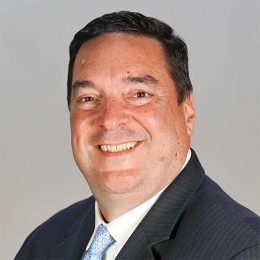How to Become a Counselor for Your Clients

There’s a big difference between completing a transaction and offering counsel.
Stay in this industry long enough and you will eventually get a call from a prospect or client, letting you know they have money to invest. It’s natural to want to show off what you know, so the transactional side takes over — spewing out financial jargon. Put it in a mutual fund! Or variable annuity! Or maybe, if you’re averse to losing principle, look at a multi-year guaranteed annuity (MYGA) or fixed indexed annuity (FIA).
Slow down. Skip the buzz words and become a counselor instead.
It’s ok to stop, think and ask questions. That’s why the client is trusting you. If they could get the same answer through Google, you’re probably not adding value to their profile.
Let’s say that client is named Joan, a 65-year-old female with $200,000. She needs your help to figure out what to do with it. Rather than jumping in with financial buzz words, start with something like: “Joan, that is great news. Before I can give a recommendation let me ask you a question or two. I know last time we spoke you mentioned that you were planning on retiring in a few years. Are you concerned about running out of money or anything else in retirement?”
At this point, you are in full listening mode —trying to uncover the client’s true concerns before providing a solution. You may confirm your expectations: Joan would like to retire as soon as possible and is concerned about having enough money in retirement. But no matter the response, you can usually pivot the answer into a deeper conversation than how to get a quick return on the client’s investment.
Here's one of my favorites: ask if the client has ever done a cash flow analysis. So often, there’s silence on the line and the client is not familiar with that term. Now we’ve moved to counselor mentality.
Uncovering the gap
You let the client know that cash flow analysis is a concept used to determine if she will have enough funds coming in to pay her monthly expenses. Using Ash’s Addressing the Risks workbook, you’ll get clients to think about expenses in two categories, essential and discretionary. Yes, it’s just like a throwback to elementary school, grouping items by needs and wants. But for those worried about retirement cash flow, thinking about the difference between day-to-day bills and the expense of traveling is a critical step.
The first goal is to give your clients additional power to take control of their finances and understand how to achieve a financially independent, happy retirement.
But it’s more than that. Your real goal is to analyze the client’s perception of their finances, so you can provide them with an accurate assessment of their income gap. Once you have received the completed worksheet, your hard work begins.
A high-level breakdown of Joan’s worksheet reveals what you need to know:
- Total yearly expenses: $70,000
- Essential yearly expenses: $40,000
- Discretionary yearly expenses: $30,000
- Total yearly in-flows: $30,000
- Annual Social Security (taken at age 62): $20,000 (increased annually for inflation)
- Annual pension from a previous employer: $10,000
- Assets
- 401(k): $750,000
- Checking account: $25,000
- Home equity: $250,000 (still paying on a small mortgage)
- Cash value from life insurance: $40,000
- Additional assets: $200,000 (the money that prompted her call)
Instead of providing investment advice that may or may not meet her needs, you’ve successfully developed a solid picture of the client’s lifestyle — and whether her concerns are grounded in the numbers or based on perceived factors.
Addressing the gap
The next step is to analyze the information provided, starting with discovering the income gap. You do this by subtracting in-flows from essential expenses:
$40,000 - $30,000 = $10,000 (income gap)
If you can provide a strategy to cover that gap of $10,000, Joan can achieve financial independence in retirement.
At this point, it’s time to bring products back into the conversation. In Joan’s situation, she needs a solution that will provide income for her entire life, regardless of how long she lives. Since she is looking to retire as soon as possible, that income needs to start immediately. We started by looking at how much would need to be deposited into a SPIA (single premium immediate annuity) or a deferred annuity with an income benefit rider to yield the $10,000 annually.
Whichever will yield the highest guaranteed income will prevail. In this situation it was a SPIA. SPIA rates area always changing, but at the time of Joan’s case, generating $10,000 per year with a cash refund option would require an investment around $200,000. Yes, sometimes the numbers just work out.
After consulting with the Ash Brokerage Retirement Income team, you recommend that Joan take the $200,000 and purchase the SPIA — providing income to cover all her bills for the rest of her life.
Planning for discretionary spending
With the retirement income gap covered, we can look at the annual discretionary expenses. We can utilize the 401(k) for that purpose. In this situation, we need to utilize $450,000 from the 401k.
We suggest using a vehicle that also addresses inflation risk and is either directly or indirectly in the market. The actual product depends on your client’s level of risk tolerance.
Are they comfortable losing any principal from the funds used to generate income? If so, you can bring ETFs, mutual funds or a variable annuity into play. If not, consider looking at a FIA, RILA or possibly structured notes.
The key is to reverse engineer the situation to discover how much is needed and what the client’s comfort level is and then designing a plan that gives them peace of mind
Every situation is different
For Joan, we addressed her core concern about running out of money and still having $300,000 in 401(k) assets left over for emergencies. If Joan did not have enough in the 401(k), we could have also used a HECM (home equity conversion mortgage) with her equity to make up the difference.
Or, if Joan were not planning on retiring and did not need the funds for a few years, we would start by looking at either a deferred income annuity (DIA) or a fixed indexed annuity with an income rider. Five years ago, a DIA yielded the most income. Today, the FIA tends to provide the client with more income.
This example explains the value of taking a consultative counseling approach. It would have been easiest to drop the $200,000 into a short-term investment at a high rate, like a MYGA. But we need to change the mindset around retirement income planning. Ash has the capabilities to search across many product platforms to discover what product would work best for that client.
The role of a financial advisor is changing, and you are now tasked with generating more income, for a longer period, with less assets than ever before. Taking the strategic approach allowed the client to get guarantees that other products (even with a high return) would not have provided.
As a bonus, you also received another $300,000 in assets. If you do right by the client, you will have larger cases and get more referrals. Start the change now.
We’re in this business to help people have a secure retirement. Let’s do it better by slowing down and asking the right questions.




















